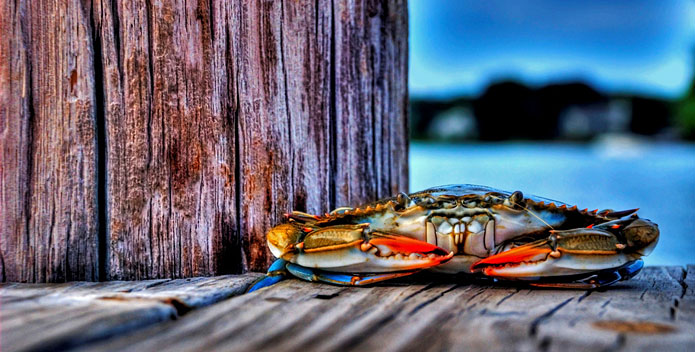BIG news for one of the most quintessential Chesapeake critters today! The annual blue crab survey, released this morning, revealed the highest population numbers since 2012 and the eighth highest in 30 years. To better understand what these numbers mean for our "beautiful swimmers," and how they relate to the overall health of the Bay, we sat down with CBF's Senior Regional Ecosystem Scientist Chris Moore:
1. What is the Winter Crab Dredge Survey anyway?
The winter dredge survey is an estimate of the blue crab population in the Bay completed every winter from December through March. It produces an estimate of the number of blue crabs living in the Chesapeake Bay region, and it's an extremely important tool in our management efforts.
2. What do this year's numbers show? How do they compare to prior years?
This year's survey shows that all segments of the blue crab population are up with an estimate total population of just under 600 million crabs. The number we most focus on is the number of adult females in the population. Their numbers increased to 190 million from 147 the previous year. The number of juveniles increased most significantly from 167 million to 324 million. This is great news for commercial and recreational crabbers along with those that love to eat blue crabs.
3. Why are crabs important?
Blue crabs are one of the Bay's most iconic species. They support robust commercial and recreational fisheries in the Bay region. They are also delicious and one of the most beloved delicacies of the Bay region.
4. What do this year's numbers mean for the overall health of the Bay?
Although many different factors affect the blue crab population, including weather, healthy Bay habitats such as underwater grasses and abundant oyster reefs help ensure young crabs have places to hide, eat, and grow larger. Improving water quality through the Chesapeake Clean Water Blueprint will only help make for a more robust blue crab population. We all should recognize that a healthy Bay includes healthy fisheries, such as the blue crab.
5. What more do we need to do to ensure the crab population continues to rebound?
There are three big things needed to help our crabs:
- Continue our efforts to implement the Blueprint. It is directly tied to increases in underwater grasses that are so important to blue crabs.
- Increase our oyster restoration activities. Oyster reefs provide valuable blue crab habitat especially in places where underwater grasses have not recovered.
- Maintain the strong blue crab fisheries management efforts that were implemented in 2008 and have been a major driver of this success.
How much do you really know about blue crabs? Take our crab quiz to find out!




